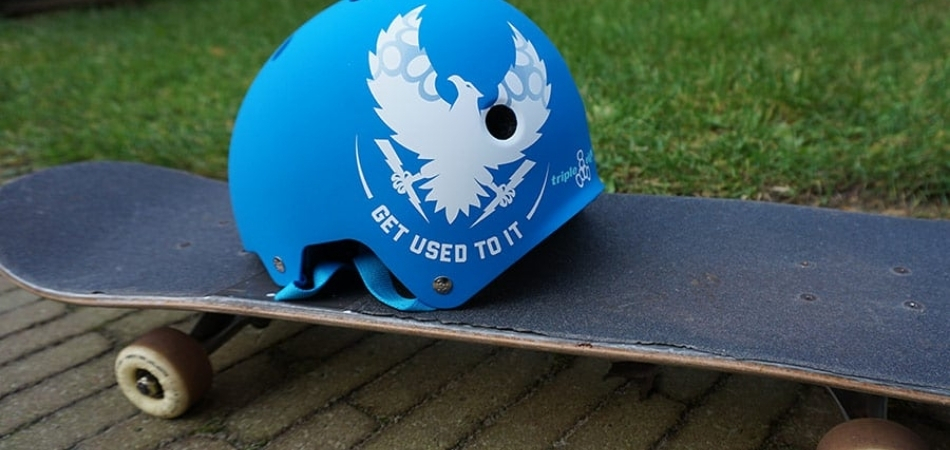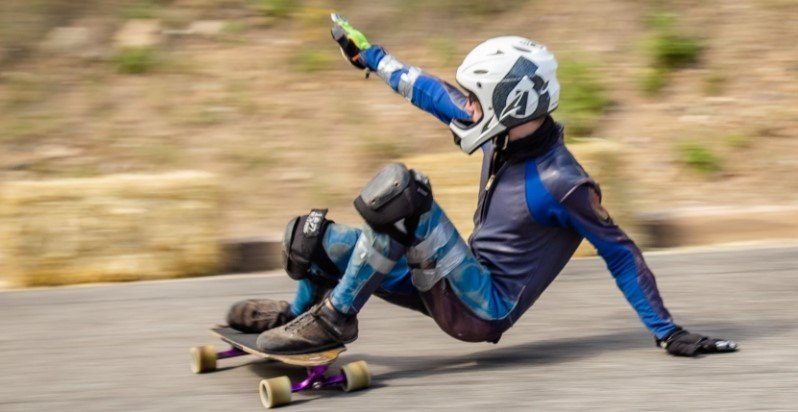Longboarding is a fun sport and has a lot of health benefits as well, but there’s a catch! Just like riding a bike, longboarding poses safety concerns, especially for concussions.
It’s understandable that the best practice is to ride a longboard with helmets on, without the risk of injuries. But the question is, does this risk involve any legal issues? Is it illegal to ride a longboard without a helmet on?
Well, the answer depends on where you live. Usually, if you cruise around at low speed or do simple commuting, there are usually no strict laws to hold you back. But if you’re riding the board at a higher speed, you will have to put a helmet on.
Let’s help you know the legalities of riding a longboard without a helmet.
Is it Illegal to Ride A Longboard Without A Helmet?
As longboarding is becoming pretty more popular nowadays, so are laws and local ordinances. Hence, it could be illegal to longboard without a helmet in open streets if there is existing law. The answer to is it illegal to ride a longboard without a helmet depends on where you live.

For instance, the longboarding speed limit varies with your location. It is higher, up to 40MPH or more when you ride down the hill compared to when you ride on plain terrain within the streets. The negligence of many longboarders in adopting simple safety habits made the local government enforce laws tagged ‘Reckless Operation.’
A good example of where such road rules or laws exist is in New York City.
The law permits anyone who sees you longboarding recklessly to make a report against you. This is the more reason you ought to take local helmet laws on longboarding seriously. The California law is even stricter. It mandates all longboarders under the age of 18 years to ride with a helmet.
How Dangerous Is Riding A Longboard
Longboarding is similar to skateboarding, except for the length of the board. It has a longer board that makes it more balanced, stable, and preferred for beginners. The long length of the boards gives it the ability to attain higher speeds up to 60MPH compared to a skateboard. While skateboarders use open spaces like skate parks or parking lots, longboarders would prefer open roads.
Longboarders would also want to ride with styles, do tricks, navigate obstacles, achieve higher speeds, and bomb down the hills. Hence, they become more vulnerable to injury when they encounter impediments such as moving vehicles, signposts, curbs, or pedestrians.
Surprisingly, some of them are less likely to ride with helmets in a bid to ride with freedom – enjoying the wind. However, your riding styles and skills determine how exposed you would be to danger, as hands and feet are the only brakes that you have.
As reports show that riding skate and longboards without helmets can cause fatal injuries, even deaths, it’s highly recommended to wear helmets.
Longboard Dancing
Dancing is a fancy and artistic way of riding a Longboard. It involves flip kicks and other fancy techniques while moving around on the board. You need more technical skill here compared to cruising, and it’s slightly less safe.
The speed limit is faster too, but you can do it on empty streets or gentle, flat slopes. However, the higher speed limit may result in more hazardous incidents. For example, you may fall easily when you encounter obstacles or while performing a dancing trick.
Plus, the quality of the board also plays a significant role in stability. Good boards don’t have to be utterly expensive, you can get a longboard under 150 bucks and do dances and stunts just fine.
Cruising on a Longboard
Cruising is the normal way of riding a longboard. It’s safer and requires you to ride in a relaxed manner on flat ground. The cruising movements are less fancy, and the rider’s speed limit is between 5-10mph.
Even if there is an incident of tripping over a crack or stone, you will only sustain minor scrapes or bruises.
Longboarding Downhill
It’s really fun to longboard down the hill at a high-speed (over 40mph). But be sure not to make any mistake as that may cost your life. Ridding downhill is the riskiest longboarding activity. But if you make a small error, you are already down with bruises.
The degree of injury is always severe, too, except on rare occasions. Unfortunately, there are no emergency brakes on a longboard. So, in case of any emergency, you can only slide your hands on the surface of the road to slow down or halt the longboard. So, we recommend that you always wear hand gloves with padding.
Freeriding
This is another challenging longboarding style. It’s similar to dancing but entails turning and drifting at higher speeds. Again, it’s not as dangerous as downhill, but you can still sustain serious injuries when you stumble or lose your balance for any reason.
Benefits of Wearing Helmet while Longboarding
There are great benefits when you ride with your helmet. No matter the level of your riding skills, or experience, the fact remains that it’s safer. Below is an outline of other benefits of riding your longboard with a helmet.

1. Personal Safety Gear
Wearing a helmet prevents or reduces head injury to a reasonable extent in case of accidents. For example, longboarding accidents may occur due to improper wheel balancing, collision with obstacles, or incoming vehicles. Since these incidents have probabilities, a helmet is necessary. Moreover, some helmet designs can shield your face from injuries too.
2. Adherence to the Law
Putting on your helmet will save you from any unexpected regulations and law-related issues. This applies to people in areas like New York City, where there is existing law on longboarding. Also, some states have mandated all intending longboarders to present a helmet before they can receive a longboarding ticket.
3. Teaching others
Wearing a helmet as an older rider would encourage the younger ones and others to follow suit. Instead of saying it, you can show them by putting on your helmet whenever you go longboarding.
What Kinds of Helmet Should You Wear For Longboarding?
Five ASTM/CPSC-certified multi-impact helmets are very common among longboarders. They include;
- Bern Unlimited: It has a flexible visor and a digital adjustment. It’s very common and effective.
- S1 Lifer: This is one of the most fitting helmets. It has a liner for heat absorption. It’s also common and affordable.
- Triple 8 Gotham: It has an adjustable knob at the back for more fitting and is best for winter.
- TSG Meta: This is a full-face helmet that covers both the head and face. It’s also light weighted.
- Bell Segment: A sturdy full-face downhill racing helmet that is solid and affordable. It’s solid and lightweight.
Final Thought
The question of is it illegal to ride a longboard without a helmet keeps popping up in the community. But the answer isn’t constant and depends on your location. If there are existing laws or regulations regarding longboarding, it’s illegal to ride a longboard without putting on a helmet.
However, it’s in your best interest to wear your helmet anytime you want to longboard. It doesn’t matter whether you ride on a plain surface or down the hill. Thankfully, there are affordable helmets to save you from severe head injuries during accidents. So, grab one and use it the next time you ride a longboard.